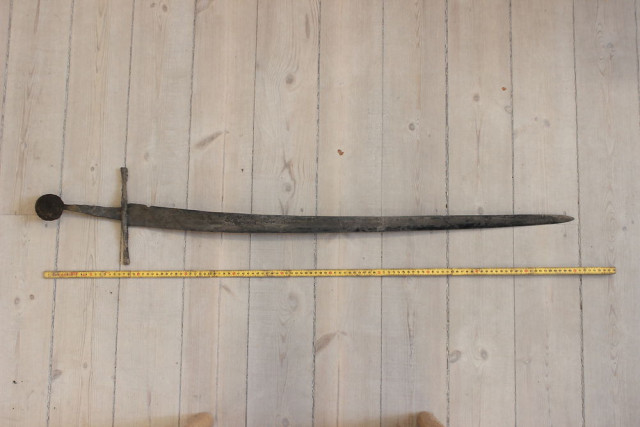The sword is likely to have been used in battle or for beheading broadcaster NRK reports.
It was discovered by divers Miro Baricic and Knut-Erik Gylder.
“We’ve mostly found rubbish up to now. Miro, who found the sword, realised quickly that it was a sword,” Gylder said to NRK.
Local newspaper Oppland Arbeiderblad was first to report the story.
– Jeg har aldri hørt om et liknende funn. Dette er et helt unikt funn, sier Arne Julsrud Berg. https://t.co/ifyoJBRJWL
— Oppland Arbeiderblad (@oppland) July 1, 2018
After discovering the sword, the two divers took it to Mjøs Museum. The museum’s director Arne Julsrud Berg said that there were indications the sword was around five hundred years old and that the location of its discovery suggested it may have been on board a boat.
“One theory suggests it may have been a battle sword. Two-handed swords like this were commonly used in wars or battles around Europe in the 1500s,” Julsrud Berg told NRK.
A second theory as to the sword’s original use could be that it was used for executions, he also said.
It may alternatively have been used for ceremonial purposes or to show status, the museum director added.
The sword has been relatively well preserved due to being under freshwater rather than saltwater or in air, which would have eroded it.
It will be taken to Oslo’s Museum of Cultural History for preservation, after which it will be transferred to the Norwegian Maritime Museum, NRK writes.
Julsrud Berg said that the 1500s were a tumultuous period in the region of Scandinavia where the sword was found, with a peasant result against the monarchy and a battle at nearby Østre Toten in 1508.
READ ALSO: Norwegian reindeer hunters find 1,100 year-old Viking sword




 Please whitelist us to continue reading.
Please whitelist us to continue reading.